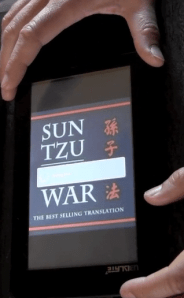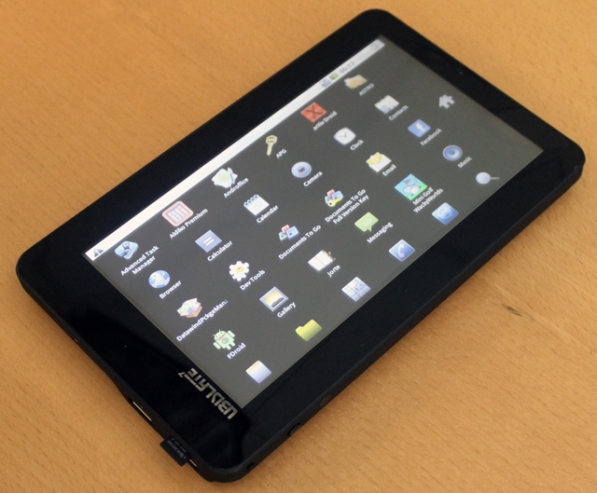An Android tablet that sells for just $35 seems like an irresistible bargain. At that price, you might even be willing to put up with some serious tradeoffs. But does the Aakash tablet work well enough to be useful?
We were able to get on our hands on this device twice. The first day we had limited time with it, and wrote an overview, India’s $35 Aakash Android tablet lands in America, based on our initial impressions. The next day we were allowed a bit more time with it, and we came a little more prepared to put it through its paces. A video of our more detailed look is below.
Vivek Wadhwa, a visiting professor at the University of California at Berkeley and Duke, gave us access to the device, which came from Kapil Sibal, the Indian minister of human resources and development, who is behind this project. The goal is to build 10 to 20 million of these devices and get them out to students. The important point to remember here is that this device to targeted to the huge population of poor people who live in the numerous villages in India where access to technology is limited.
Speed
As mentioned in the previous article, the device is painfully slow. Using a 366 MHz Connexan processor to plow through Android 2.2 (Froyo) is not exactly a fair fight. You can tell by the device’s inability to handle heavy 2D graphic tasks, most notably trying to scroll through a screen of icons. We also had a very difficult time with the web browser, however this was the stock browser that comes with Froyo. We wanted to try downloading more stripped down and faster browsers, but alas Android market and GetJar were not installed in the test unit. So given the limitations, we did the best we could, killing processes in the background that did not need to be running and trying very hard to be patient.
We put ourselves in the shoes of students when we tested this device again. What, as a student do you really need? You need to read, write, perhaps do arithmetic, and in today’s world, watch educational videos or live streams.
Word processing
We started with writing. To do this properly, we need to be able to type.

We opened Notepad so that we could try connecting a keyboard to the USB port. And in a few seconds, we were able to type easily. This made all the difference in the world.
As the device stands now (and granted, it’s a beta device with what seems to be an un-optimized installation of Froyo) it feels slow to anyone who has used the latest batch of tablets on the market, such at the iPad the Xoom. But with a USB keyboard, the device became a bit more usable.
Reading and opening files
To read, we need access to digital books.
First we loaded Aldiko, an e-book reader. We opened Sun Tzu’s Art of War. It took a long time to load the app, perhaps 8 seconds. Loading the book itself took only a few seconds, and once it was loaded, it was easy to use and responsive — almost Kindle-like. The device is light and it was easy to read and easy to turn pages.
However, not all books will be available online and not everyone will have access to Wi-Fi or 3G (even though it is quite cheap in India). We need to be able to load books and other documents from a memory stick. This is where the second USB port comes into play. We grabbed a USB key and tried to load a few documents, with immediate success. We opened Word docs, PowerPoint, PDFs and even an MP4. Documents To Go was used to handle most of the viewing, and although the loading and scrolling was slow, it was still usable.
Overall performance
So our conclusion is that as education device that only needs to be “good enough,” this tablet is pretty close. With some tweaks to the OS to increase the speed and reduce the memory footprint, and keeping the price point under $50 per unit, I think Kapil Sibal may have achieved what he and his team has set out to do.
Enough talk. Lets have a look at the Videos. The first video is from the first day where we tested the web browser.
[vimeo http://www.vimeo.com/31131809 w=560&h=315]
The second video looks more at creating and reading documents.
[vimeo http://www.vimeo.com/31238148 w=640&h=360]
Related articles
- Hands On: India’s $35 Aakash Android tablet lands in America (venturebeat.com)
- $38 Aakash Android tablet launches in India (venturebeat.com)
- Vox is the latest Android tablet-cum-ereader, & it’s selling for $200 right now (venturebeat.com)
- Toshiba to launch new 7-inch Android tablet with high-rez screen (venturebeat.com)
- Amazon’s 7-inch Kindle tablet set for November at $250 (venturebeat.com)


